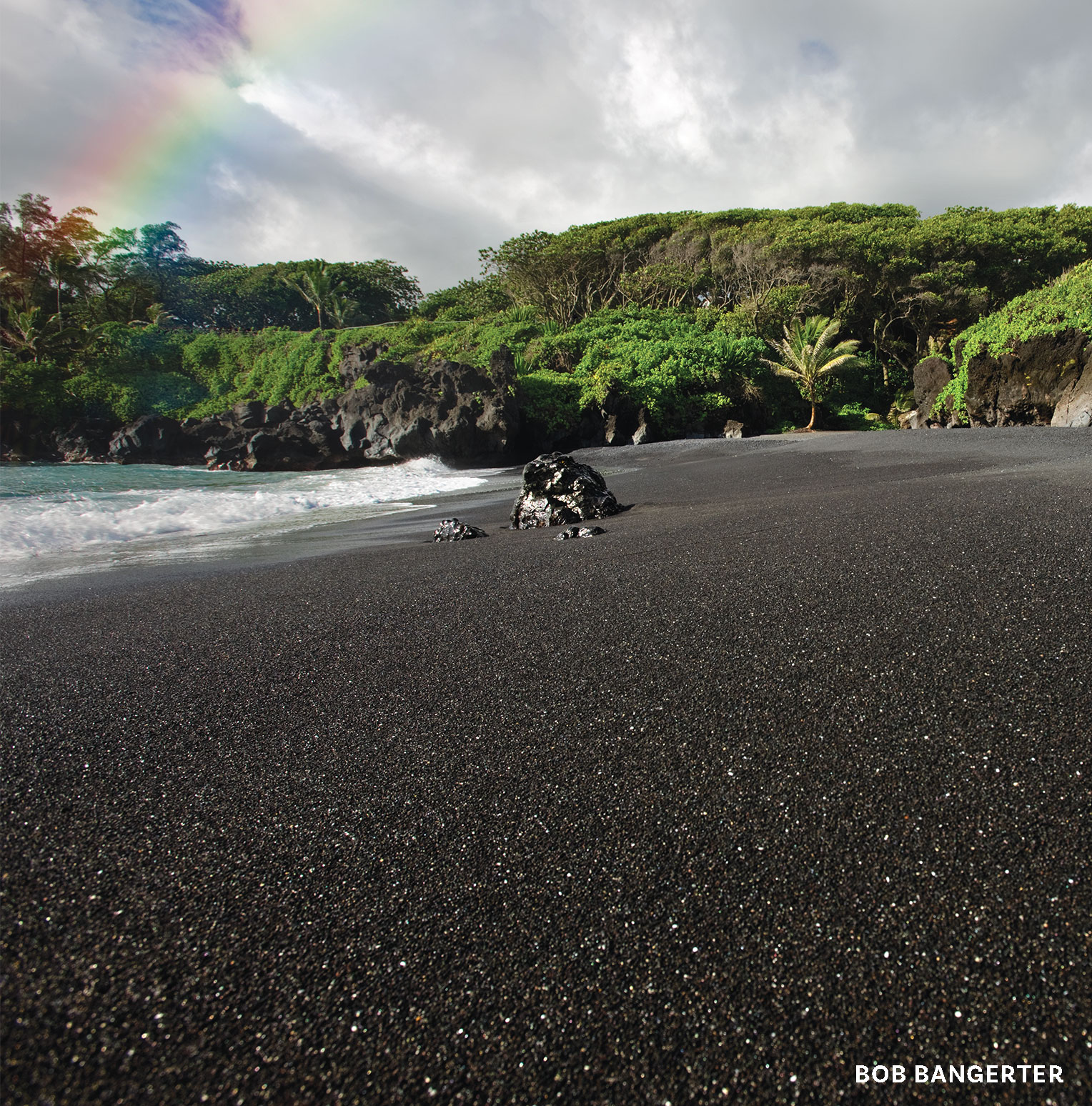Story by Judy Edwards | Photography by Bob Bangerter

Black Sand, Waianapanapa
Like black glitter left in the wake of the volcanic afterparty, black sand lies around being glamorous. This lava sand is black thanks to the presence of manganese compounds, but that seems . . . such a pedestrian thing to say.
Black sand comes to be in two ways. The fast way is currently Big Island specific: 2,000F lava drips languidly into 75F ocean and explodes in sprays of brilliant black glass. The dazzling beaches at the base of Kilauea’s lava flows look like miles of really dark, shimmering ground coffee. At the level of the particles, it’s all ragged slabs of blades, however, and it’s terribly hard to live in it if you are, say, a tiny crab. Black sand is also a fabulous heat retainer, guaranteed to bake your feet, and anything else living, at noon.
The slow way we get black sand is this: Take one cooled, hardened lava flow, beat it with the ocean relentlessly until little bits fracture off. Roll the bits about in the surf for ages, until the edges surrender. The beaches around Waianapanapa State Park are made of this kind of sand. It’s fatter and softer than fast-made sand, and the particles have a wider range of sizes. Some are still really plump pebbles, heavy and slow. In the Hawaiian past, people collected the larger of these pebbles to make the flooring for dwellings. Upon a good, thick layer of these water-worn pebbles, one could lay woven mats and beaten lengths of kapa. Reclining, you would hear the ocean fingering the black sands, patiently sorting the particles by size.





Very interesting as are all of the articles, I read your magazine from cover to cover!
always good and interesting info